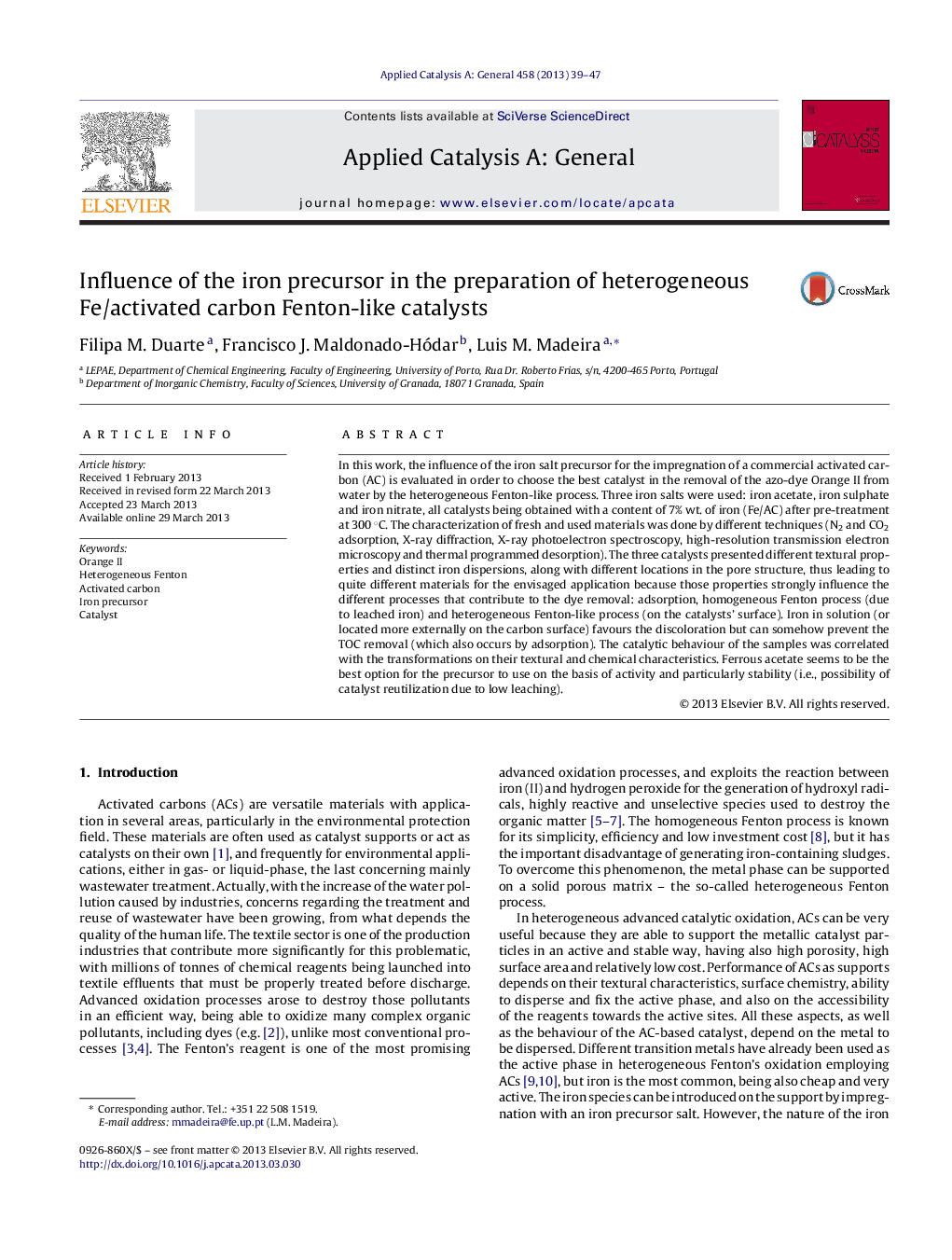| کد مقاله | کد نشریه | سال انتشار | مقاله انگلیسی | نسخه تمام متن |
|---|---|---|---|---|
| 40439 | 45854 | 2013 | 9 صفحه PDF | دانلود رایگان |

• Activated carbon (N) was impregnated with Ac2Fe (iron acetate), FeSO4 and Fe(NO3)3.
• Catalysts with different porosities and iron dispersions/locations were obtained.
• N-FeSO4: more external Fe particles and higher leaching favoured discoloration.
• N-Ac2Fe: internal Fe particles favoured TOC removal and low leaching – best catalyst.
• N-Fe(NO3)3: good Fe dispersion, but high leaching; intermediate catalytic behaviour.
In this work, the influence of the iron salt precursor for the impregnation of a commercial activated carbon (AC) is evaluated in order to choose the best catalyst in the removal of the azo-dye Orange II from water by the heterogeneous Fenton-like process. Three iron salts were used: iron acetate, iron sulphate and iron nitrate, all catalysts being obtained with a content of 7% wt. of iron (Fe/AC) after pre-treatment at 300 °C. The characterization of fresh and used materials was done by different techniques (N2 and CO2 adsorption, X-ray diffraction, X-ray photoelectron spectroscopy, high-resolution transmission electron microscopy and thermal programmed desorption). The three catalysts presented different textural properties and distinct iron dispersions, along with different locations in the pore structure, thus leading to quite different materials for the envisaged application because those properties strongly influence the different processes that contribute to the dye removal: adsorption, homogeneous Fenton process (due to leached iron) and heterogeneous Fenton-like process (on the catalysts’ surface). Iron in solution (or located more externally on the carbon surface) favours the discoloration but can somehow prevent the TOC removal (which also occurs by adsorption). The catalytic behaviour of the samples was correlated with the transformations on their textural and chemical characteristics. Ferrous acetate seems to be the best option for the precursor to use on the basis of activity and particularly stability (i.e., possibility of catalyst reutilization due to low leaching).
Figure optionsDownload high-quality image (214 K)Download as PowerPoint slide
Journal: Applied Catalysis A: General - Volume 458, 10 May 2013, Pages 39–47